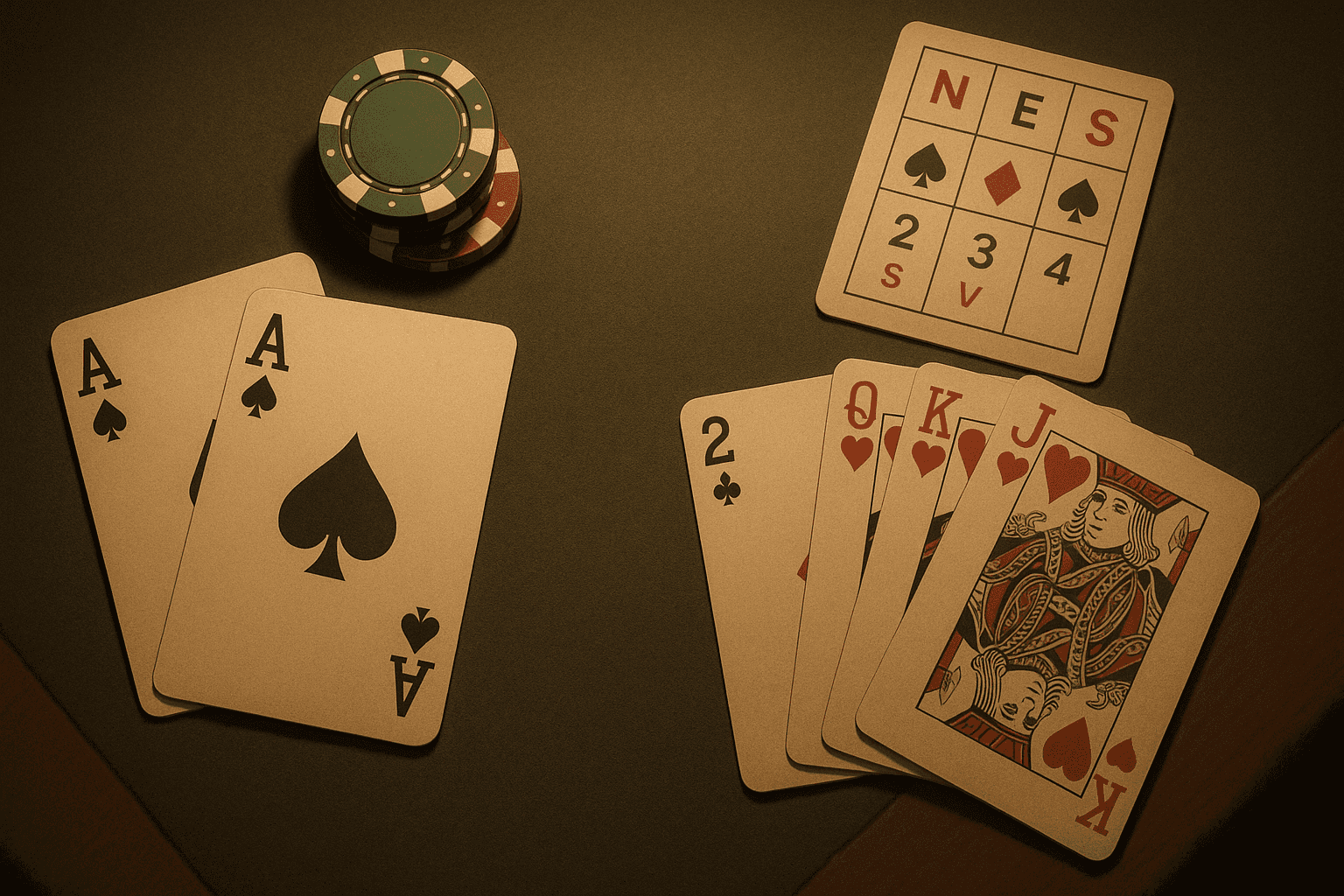
How Great Players Manage Risk - Lessons from Blackjack and Bridge
Every card game is built on risk. From a casual hand at home to a professional tournament, the outcome always depends on how players read uncertainty. Great players don’t try to eliminate risk - they manage it. Whether the goal is to outthink an opponent in Bridge or calculate the odds in Blackjack, mastery comes from understanding when to take a chance and when to hold back.
For readers who want to explore more about the art and science of playing cards, visit our main section on card game rules.
Created By Adam Davis Fernsby
The Nature of Risk in Card Games
Risk is what makes every hand exciting. Without it, a card game would be pure repetition - predictable and dull. But in the right hands, uncertainty becomes an advantage. Skilled players view risk not as danger but as potential.
In any game, there are two kinds of risk: random risk and strategic risk. Random risk is built into the game itself - the shuffle, the deal, the draw. Strategic risk comes from player decisions - choosing to bid, to hit, to bluff, or to fold.
The difference between a good player and a great one lies in understanding how these two forces interact. The best players accept that luck exists but use logic and observation to reduce its impact. They play not for immediate reward, but for long-term advantage - where good decisions consistently win over time.
Risk Management in Blackjack - Playing the Odds
Blackjack may look like a game of luck, but to experienced players it’s a structured exercise in probability. Every move can be expressed in terms of expected value - what the player stands to gain or lose in the long run.
At its core, Blackjack strategy revolves around mathematical discipline. When to hit, stand, double or split isn’t guesswork - it’s derived from thousands of probability calculations. For instance, when the dealer shows a weak card like a five or six, statistically the best move is to stand on lower totals, forcing the dealer to bust.
Great players also use information tracking - paying attention to which cards have been played to estimate what remains in the deck. Known casually as “card counting,” this isn’t cheating but rather a form of advanced risk assessment. It helps the player adjust their bets slightly when the remaining deck composition favors them.
Equally important is emotional control. A disciplined Blackjack player never chases losses or bets impulsively. They understand that short-term luck is volatile, but skillful play pays off in the long run. You can explore the fundamental principles behind this approach in the complete Blackjack rules guide.
Risk and Partnership in Bridge
If Blackjack teaches us to manage individual risk, Bridge adds another dimension - shared risk. Here, every choice affects not only your own outcome but your partner’s as well. Success relies on trust, communication and mutual understanding.
In Bridge, even the bidding process is an exercise in risk management. Players signal strength and suit preference while balancing between safety and ambition. Should you push for a risky slam or settle for a safer contract? The best players know that restraint can be just as powerful as aggression.
Great Bridge partnerships rely on consistency. A single impulsive bid can collapse an entire strategy, but a well-timed risk can turn the tide. The game’s elegance lies in this constant negotiation - between logic, instinct and collaboration. Those wanting to master these principles can learn more from the official Bridge rules.
The Psychology of Risk – Why Emotion Matters
Behind every good decision lies not just logic, but psychology. Emotion influences how people handle uncertainty - often more than they realize. The most common downfall for players is overconfidence after a win or recklessness after a loss. In casino terms, this emotional spiral is known as “tilt” - the loss of control following frustration or disappointment.
The difference between great and average players isn’t luck or intelligence; it’s composure. A skilled player makes rational decisions even when the cards go against them. They treat every hand as part of a larger sequence, understanding that variance is inevitable.
In both Blackjack and Bridge, patience is the ultimate weapon. Where beginners see randomness, experts see patterns. They don’t play the game in front of them - they play the long game.
Lessons Beyond the Table
Managing risk at the card table mirrors managing risk in life. Every choice - whether financial, social or strategic - involves imperfect information. The key is to make calm, consistent decisions despite uncertainty.
From Blackjack, we learn discipline and probability - how to make data-driven choices and avoid emotional swings. From Bridge, we learn cooperation and trust - how to take smart risks within a team dynamic. Together, they teach that success isn’t about eliminating risk but understanding it deeply.
Mastering these lessons takes time, patience and humility - the same traits that define not only great players but great thinkers.
Conclusion
In the end, risk isn’t the enemy of great play - it’s the essence of it. The best players don’t seek certainty; they thrive within uncertainty, guided by skill, self-control and a quiet respect for chance. Whether you’re at a casino table or playing a friendly match at home, managing risk is what transforms a hand of cards into a game of mastery.